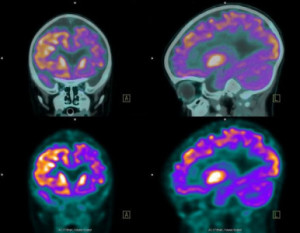The most creative individuals have more nerve connections between the right and left sides of their brains, reveal researchers in the United States who analyzed connections in 68 different brain regions.
Long believed to be key in fostering imagination and intuition, as well as artistic awareness, and visual and auditive approaches, the right hemisphere isn’t the only part of the brain with a role to play in determining creativity, according to new research from Duke University.
In reality, it is the ability of the brain—a veritable information superhighway comprising a complex network of wired connections—to increase connections between neurons on the two sides of the brain that could set highly creative people apart, the study concludes.
A team of researchers at the University of New Mexico used an MRI imaging technique to study the pathway of all the brain’s connections, called axons, which carry information between neurons. They studied the brains of healthy college-age volunteers then converted their findings into 3D “maps,” showing the wiring of the brain.
Participants’ creativity was evaluated through a series of tests. Some of these used a type of problem-solving called “divergent thinking”—the ability to come up with many answers to a question—such as drawing as many geometric designs as possible in five minutes.
Next, participants were asked to think of new uses for everyday objects, such as a brick or a paper clip. They also filled in questionnaires about their achievements in 10 fields, such as visual arts, music, creative writing, dance, cooking and science.
Connections could be the key
The scientists found that the top 15 percent most creative participants, scoring highest in creativity tests, had more connections between the left and right sides of their brains (mainly found in the frontal lobe) compared to the 15 percent least creative participants.
No difference was found between men and women.
Beyond analyzing brain structure to predict how creative someone might be or what activities they might be good at, the team are also developing statistical methods to find out whether brain connectivity varies with IQ.
The researchers also hope to use this kind of advanced brain imaging to help detect and better understand epilepsy, schizophrenia, Alzheimer’s disease and traumatic brain injuries.
Several concentration- and visualization-based techniques, such as meditation, are understood to favor brain plasticity, a function allowing the brain to renew its neuron networks. In the wider field of neurology, art therapy is starting to be studied as a means of helping patients regain cognitive capacity after suffering a stroke.
The study is published in the journal, Bayesian Analysis. JB
